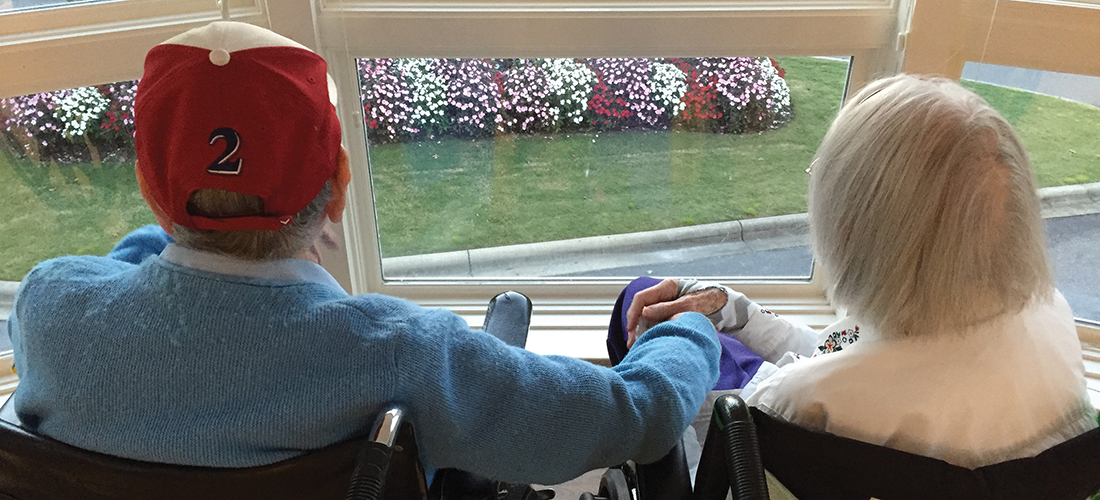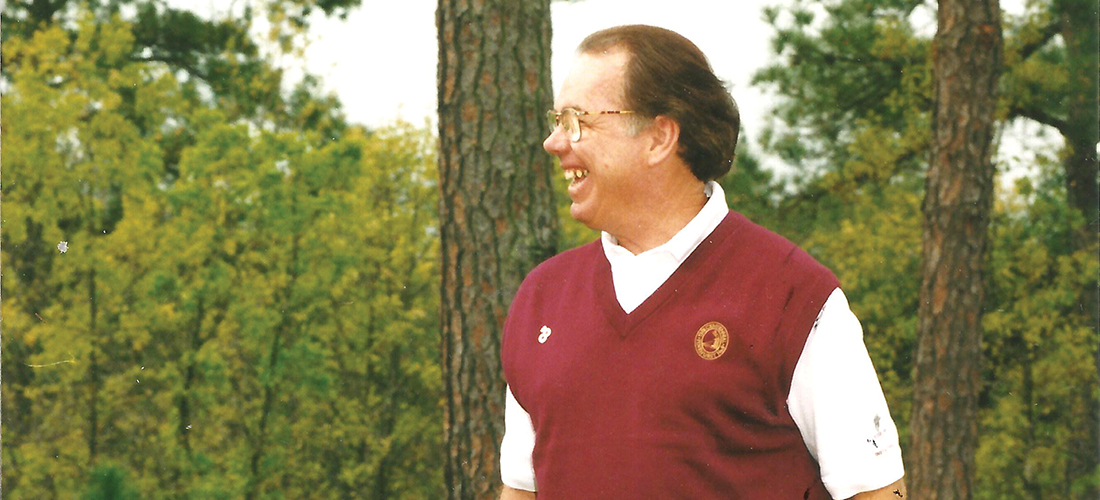North Carolina’s dean of golf course architects reflects on his very productive life
By Lee Pace
To an 18-year-old in the summer of 1975, Hendersonville was Hicksburg USA and a town lacking any distinction beyond having an excellent high school basketball team (the Bearcats bounced Pinecrest High, yes, that Pinecrest High, in the 1972 state 3-A title game in Durham) and a convenience store on Sixth
Avenue quite liberal in dispensing beer to minors. We’d stock up on Budweiser and Slim Jims and cruise up and down Main Street between a city recreation park on the north and the Hardees on the south. I was off to Chapel Hill in the blink of an eye.
“I couldn’t get out of this town fast enough,” I told one of its newer residents some years later.
“And I couldn’t get here fast enough,” the fellow replied.
It was the early 1990s and golf architect Tom Fazio was showing me around the office he’d opened in Hendersonville in 1985 when, after discovering the appeal of the western North Carolina mountains in designing Wade Hampton in Cashiers in the mid-1980s, he and his wife, Sue, decided the environment was better suited to raise their six children than their previous home in the Palm Beach area of South Florida. Fazio looked out his office window to the west toward the crest of Laurel Park Mountain, golden-tinged on this particular autumn afternoon.
“Main Street with a view,” he mused. “What more could you want?”
As I mellowed and matured over the years and returned to visit my mother and marvel over the evolution of downtown Hendersonville — with its serpentine traffic pattern, ceramic bear statues, meticulous landscaping and neat confluence of restaurants and antique shops — I had to admit that Fazio had a point.
Often I’d work in a trip back home with a visit to Fazio’s golf architecture firm. Things were so flush as the 1990s golf boom evolved and Fazio had become arguably the world’s foremost modern architect that in 1998 he bought an entire four-story, 1923 neo-classical building at the corner of Main Street and Fourth Avenue and moved his firm’s headquarters to the top floor.
I witnessed Fazio Golf Course Designers’ operation in thick and thin. One afternoon in the mid-1990s, Fazio and his staff worked furiously to get some design drawings and documents printed and packaged in time to ship overnight.
“Everything builds to a climax waiting for the FedEx guy to come,” Fazio said.
And a dozen years later I sat with him in a quieter environment, the golf design business slowing to a crawl during the 2008-09 recession and his staff being lopped off in the aftermath.
“What’s different?” he asked rhetorically, cocking his head as if to listen. “The phones aren’t ringing.”
On my most recent trip to Hendersonville, on the last Friday of October, I found Fazio in his office signing copies of his 2000 book, Golf Course Design, and minding one of his granddaughters and one of the family dogs. He spoke of the annual winter sojourn to Florida planned for the following week now that all six children are grown and he’s semi-retired — but not until after Halloween night.
“Two of my daughters and four grandkids are here,” says Fazio, who lives nearby in Lake Toxaway at least half the year. “We’ll be on Main Street on Halloween night. They block off the streets and have games, trick-or-treating, music, lots of stuff for the kids. The kids have a blast.”
Exactly four decades ago, Fazio and his uncle and golf-design mentor, former PGA Tour player George Fazio, were trying to jump-start a struggling architecture business that had been relegated to remodeling jobs for U.S. Open courses during the early 1970s recession. They were asked to design Pinehurst No. 6 — the resort’s first course away from the village proper — and that course opened in 1979. Soon after Tom took on an ambitious project on the South Carolina coast near Charleston. Wild Dunes was a major success and, presto, his solo career (with George now in retirement) was off and running.
On this afternoon, Fazio is ruminating about one simple question: Where have all the years gone?
“You blink and all of sudden, your life’s flown by,” he says.
He nods toward Nina, his granddaughter. “Just yesterday I was rushing home to see a dance recital. Now that little girl has grown up and has children of her own.”
It pains him to look around his universe of friends and clients and see some of his favorites having passed, among them William McKee, the founder of Wade Hampton, dying in 2014 at the age of 62, and Billy Armfield, the founder of Eagle Point in Wilmington, passing this July at the age of 81.
“One of my fun jobs over so many years was helping people fulfill their dreams,” Fazio says. “A golf course is a dream for them. We literally build their dreams. It’s really tough for me when we lose guys like this. Every day I go to Wade Hampton, and I can’t believe William McKee is not there. He was younger than me. There’s a vacuum with him not there.”
Fazio’s oldest son, 39-year-old Logan, is now leading the design efforts on much of the firm’s work, and long-time associate Tom Marzolf is in charge of a new course at Adare Manor in Ireland, a job where the client essentially has instructed Fazio and Marzolf to build “the Augusta National of Ireland.” Fazio continues as a consulting architect at Augusta National and Pine Valley, and the firm has just completed a course at Davant Plantation near Ridgeland, S.C., and one called Silo Ridge Field Club two hours north of Manhattan. Construction is continuing on The Summit, a high-end residential community outside Las Vegas, and two courses that will occupy the firm in 2017 are set for Long Island and the Abaco Islands in the Bahamas.
Logan recently supervised a major renovation to Kasumigaseki Country Club’s East course, the host layout for the 2020 Tokyo Olympic Games. The course opened for play in 1929 and was designed by one of the Golden Age’s leading architects, Charles Hugh Alison.
Now at the age of 71, Fazio talks with wide-eyed amazement at the next chapter in travel, technology and the business of designing golf courses. Years ago he refused to travel beyond the boundaries of getting back home for dinner; now he views drone clips from Logan of ongoing construction work from far-flung locales.
“I show my phone to Sue and say, ‘Can you imagine this? This is live, this is Logan sending us this. We’re looking at a golf hole,’” Fazio says. “He’s showing me how he’s shaping a bunker or moving a tree. Look at this big tree going across the stream, that’s live. It’s unbelievable the technology available. You don’t have to travel as much and go as often.”
Fazio has long cast a huge design shadow in the Carolinas and certainly in the Sandhills. There are 18 courses across North Carolina and 22 in South Carolina with the Fazio shingle. In Moore County he’s designed Nos. 4, 6 and 8 at Pinehurst, and 36 holes at Forest Creek Golf Club.
“You could take the courses we’ve done in North Carolina or those in South Carolina, and either list would be a nice career for someone,” he says.
Next year is going to be an interesting one for Fazio’s North Carolina portfolio as Eagle Point, his 2000 design in Wilmington, will be the site of the Wells Fargo Championship in May, and Quail Hollow in Charlotte, where he has done significant remodeling over the last two decades, will be the venue for the PGA Championship. Then the U.S. Amateur comes to Pinehurst in 2019, with stroke play qualifying being split on Nos. 2 and 8. The latter opened 20 years ago this fall and was dubbed “The Centennial Course” to celebrate Pinehurst’s 100th anniversary.
“I was at the Masters one year and I called the office for messages,” Fazio says. “I had a note to call (Pinehurst owner) Bob Dedman. I called him and he asked if I’d be interested in designing No. 8. I was sitting there in one of the great places in golf, Augusta National, and got a call to do a course in another great place in golf, Pinehurst. It was like I had won the Masters. It was a great feeling.”
Grandkids, playing golf, some design consultations — it’s a busy life even today for Tom Fazio. We say so long and on my way out of town, I drive past the sprawling Boys & Girls Club complex on Ashe Street, just east of downtown. Over two decades, Fazio has funneled untold dollars into the facility and recently wrote a check toward a new gymnasium. Fazio’s interest piqued in the mid-1990s when he noticed bored teenagers loitering on street corners after school. The clubs touch thousands of youngsters annually with tutoring, arts classes, recreation, athletics and mentorship.
“It’s an unbelievable place,” Fazio says. “Of all the things I’ve ever done, nothing comes close to that. Some people have boats and hobbies. I have golf, which is my business. Then I have my kids and the kids of the Boys & Girls Clubs. That’s been plenty for me.” PS
Hendersonville native, Chapel Hill resident and longtime golf writer Lee Pace has contributed to PineStraw since 2008.










